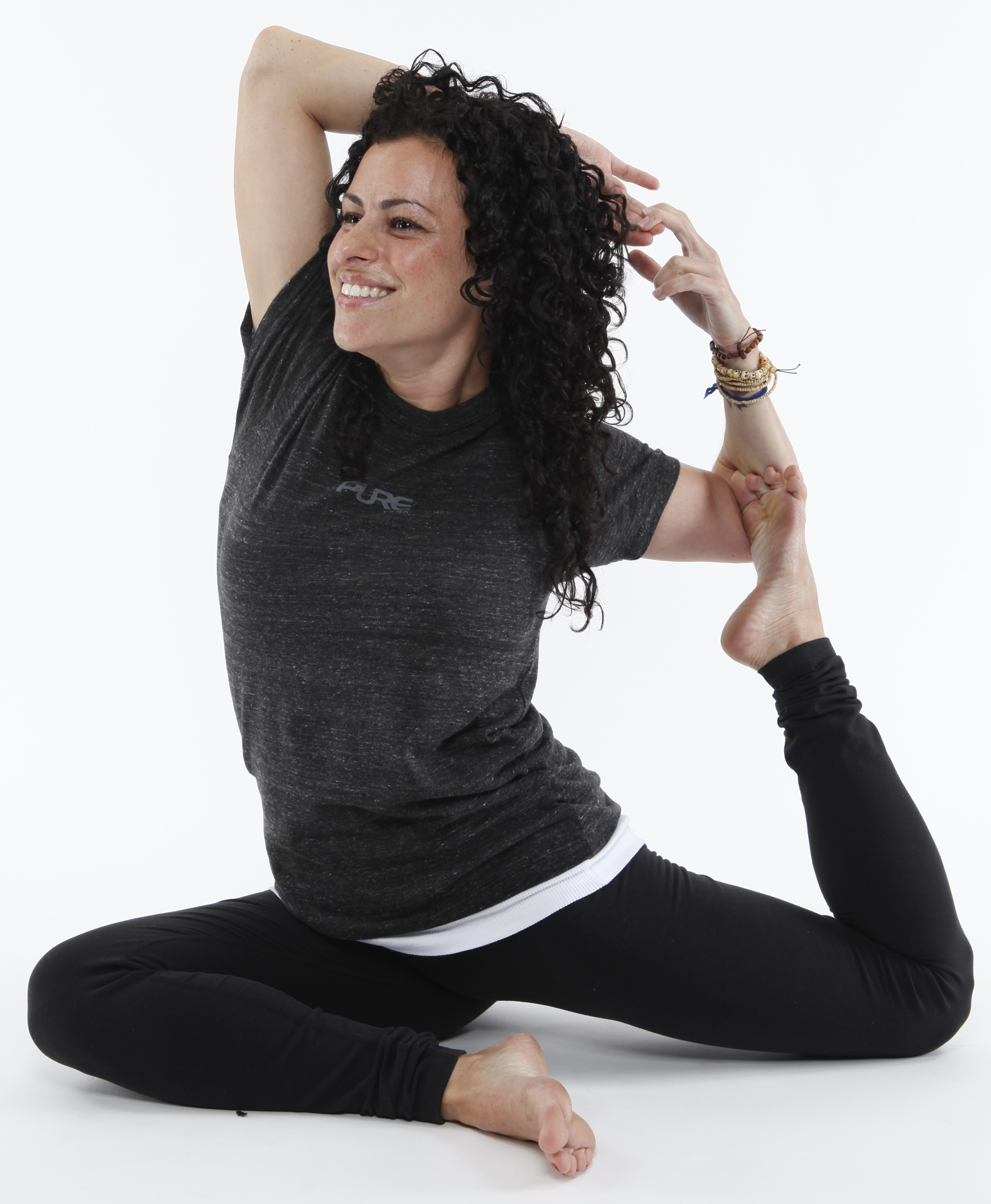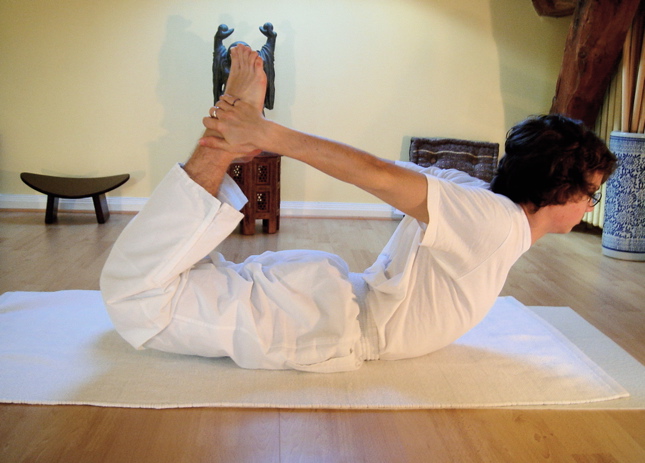Learn yoga postures with ease. How to do backbends.
Yoga postures render our body into various poses. Some of the yoga asanas would render our whole body bending backwards.
Such postures can be labelled as ‘backbend’ postures; however, there is no such classification of the postures. While doing these backbends, we could experience a sense of freedom. Doing this also involves an element of courage, as the bending backwards is not an easy job.
Such postures make our arms and shoulders more powerful. The spine would get proper exercise, too. The waist would get a maximum stretch in some of the postures. It could help in reducing back pain, too. Here are some yoga postures that would require our body to bend in the backside.
HOW TO DO DHANURASANA, BOW POSE
- First of all, unfold your yoga mat on the floor and lie down on your stomach.
- Now keeping the palms upward, just position your chin on the floor. Then start bending your knees towards the body and finally grab both of your ankles with the respective hands.
- Here the real Dhanur-asana starts. Keep inhaling slowly and try raising your knees by pulling the ankles with your hands. Simultaneously try raising your chest above the floor. When you can not inhale more, hold it.
- Once you tilt your head backwards, your body will come into a ‘Bow Posture’ as it is shown in the above image. You can hold your body in this posture as long as you can. But for the beginners, it would be advisable to keep it for ten to thirty seconds.
- To get your body released from this asana, do all the things in reverse order.
BENEFITS OF DOING DHANURASANA
- Dhanur-asana helps to keep the flexibility of the spine in order and helps in reducing the back pain, both lower and upper.
- It keeps our neck tension-free.
- It helps in digestion, too, as the area of abdominal muscles gets increased flow of blood by practicing this asana.
Urdhva Dhanurasana
| Joseph RENGER, CC BY-SA 3.0, via Wikimedia Commons |
How to Do Reverse Bow Pose
We can see that in this yoga posture, we are to do the posture exactly the reverse of Dhanurasana, the Bow Pose. While doing this asana, just lie down on your back, straight and in a relieved state of mind.
After you are on your back, just start pushing your back on the upper side of your body. do it slowly if you feel pain in your back or in another limb. Finally manage to balance your body on the base of your hands and feet. Here your feet and palms would be your only attachments to your yoga mat.
Benefits of Doing Urdhva Dhanurasana, Reverse Bow Pose
Regular practice of Reverse Bow Pose improves the elasticity of our spine and the joints of the hip. It would help to slim our waist. Due to the rapid breathing we would do during this asana, it helps to increase the capacity of our lungs to take in more oxygen.
How to do Ardh Dhanurasana,
--Half Bow Pose
Beginners can do the above pose in half. This posture is known as the Ardha Dhanurasana, or Half Bow Pose.
Theme: Backbend Yoga Postures, Eka Pada Rajakapotasana
 |
| lululemon athletica, CC BY 2.0, via Wikimedia Commons |
While we do various yoga postures, our body takes various shapes. The names of yoga postures are given as per the shapes the posture makes. Sometimes it is named so, looking to the benefits and the limbs of the body it involves.
Rajakapot Asana, or the King Pigeon Pose
Rajakapot Asana, or the King Pigeon Pose, renders our body in a particular shape. In the image given here, it has a special name. Eka Pada Rajakapotasana, as it involves one leg mainly.
This posture involves a backbend posture. It helps to open the hip portion of our body. This posture involves intense backbending. So for the beginners, it would be advisable to do this asana in the presence of a trained teacher.
YOGA POSTURES: Ustrasana—Camel Pose
 |
| lululemon athletica, CC BY 2.0, via Wikimedia Commons |
This posture is known as Camel Pose. It has several benefits. If we do it regularly, it helps in curing many diseases. It is not a very difficult yoga posture. The yoga posture of the Bow Pose is similar to this pose. But that is done by positioning our body differently. Here the step-by-step instructions are given.
How to Do Camel Pose
- Raise your hips positioned over your knees. Keep the shoulders straight over your hips.
- Put your palms touching your hips. Fingers should be facing the floor.
- Your upper body would look like a circle. From this stage, start pushing your hips forward so that they come straight up on the knees.
- Now put your palms on your paws. Imagine here that there is a string tied to your waist that pulls you towards the sky.
- Finally, allow your head to come backside, opening the throat. Now the whole body would look like a camel, and the pose would be 'camel pose.'
- If you are a beginner, you should not remain for more time in this posture.
- For a beginner, a stay of twenty seconds would be a sufficient exercise.
- While doing camel pose, someone may be feeling nauseous. But it normally happens while doing such postures. You should find yourself comfortable after a while.
- The women who are pregnant should avoid doing this posture. If they wish, they should do it after consulting a physician. A pregnant woman must do camel pose in the presence of a trained teacher only.
- If you do not feel tired, you can repeat doing this pose as many times as you wish. If you feel exhausted, take a good rest.
Benefits of Doing Ustrasana
- While we do camel posture, almost all the muscles of our body are stretched. This pose provides adequate exercise for the whole of our body. So it is a comprehensive exercise.
- If this pose is done as shown in the above passage, it would provide good exercise to many limbs, including the chest, abdomen, and quadriceps. In short, the front side of our body gets fully involved.
- If we do this posture regularly for a specific period, it would improve the flexibility of our spinal cord.
- Those persons who suffer from backache would be benefitted very much. After doing camel pose for a week, they would feel some relief from the pain.
- Adjust the yoga mat on the floor. Sit in a kneeling position. If you feel pain or have a problem in your knees, you can take help of some padding.

ALWAYS FEEL FREE TO COMMENT. I value your views.
ReplyDeleteI think this is an informative post and it is very useful and knowledgeable. therefore, I would like to thank you for the efforts you have made in writing this article. Yoga outfit
ReplyDeleteThank you
DeleteHey You shared such a amazing article about Yoga and its benefits. Thanks For sharing. I was also searching same information and your article helps me alot. Hey i have shared some informative article on Yoga You may check from here. also i want to recomment Jindal Naturecure,Jindal Naturecure is one of the leading naturopathy hospitals in India. They cure various deadly diseases by the process of detoxification of the body
ReplyDeleteThank you.
DeleteCOMMENTS ARE WELCOMED.
ReplyDelete